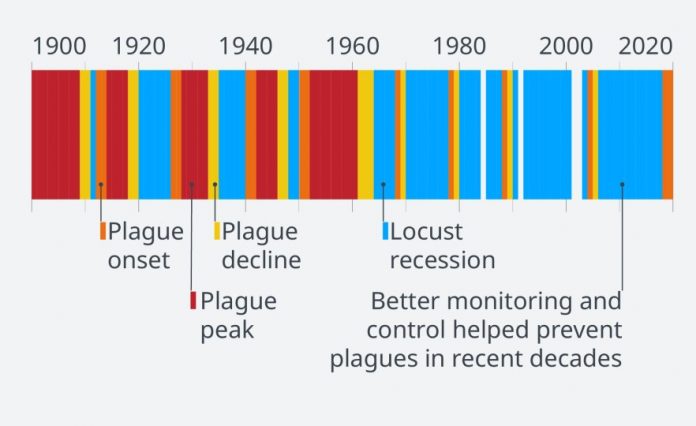East Africa is still battling its worst locust invasion in decades. Amid the COVID-19 crisis, countries are fighting to stop a new generation of locusts swarms.
Since 2019, East Africa has been desperately trying to control a devastating desert locust invasion. The long rains that typically fall across the region from March to May this year will probably allow yet another generation of locusts to mature, further threatening crops and livelihoods.
This would be an additional blow to food security in East African countries, which are also facing economic disruption from the coronavirus pandemic response.
In the region, swarms of desert locusts covered more than 2,000 square km – an area as big at Ethiopia’s Lake Tana – in April alone.
Swarms of this size are made up of billions of insects, which can obliterate vegetation, eating more in a day than the combined population of Kenya and Somalia do.
Ethiopia and Kenya are currently the worst hit by the locust infestation.
New waves of locusts are forecast for the coming months in Kenya, southern Ethiopia and Somalia as seasonal rains create favorable breeding conditions.
“The next generation of swarms will be around late June or early part of July,” says Keith Cressman, senior locust forecasting officer at the UN Food and Agricultural Organization (FAO).
The timing is particularly worrying as this would coincide with the start of the harvest season.
Crops wiped out
Desert locust swarms strip almost all green vegetation from crops and trees over immense areas, leaving behind ravaged fields and pasture lands and putting both farmers and pastoralists at risk of severe food shortages.
It’s predicted more than 25 million people in East Africa will experience food insecurity in 2020 with the locust infestations compounding the situation. Read more…




